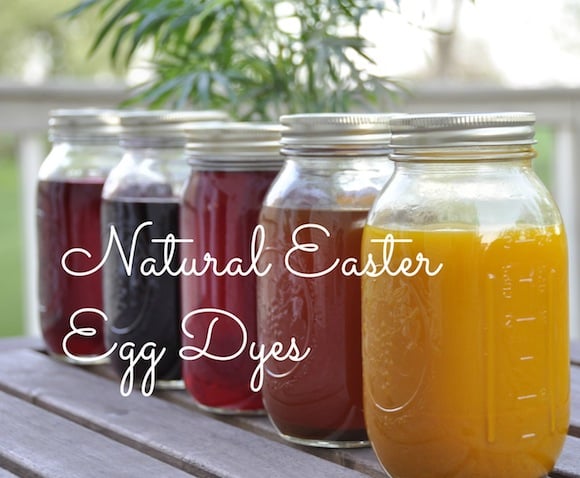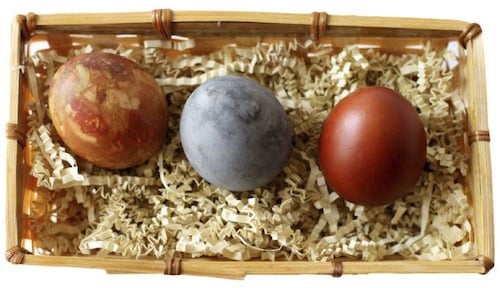Even if you don’t eat the eggs you color for Easter, conventional dyes have chemicals that can get on kids’ hands (and all over the kitchen) during the process. Why mess with the fake stuff when Mother Nature makes beautiful colors on her own?
Here’s how to make your own natural Easter egg dyes.
Start with hard-boiled eggs with clean shells. No worries about exact measurements… feel free to estimate how much of each dye (see color chart below) to use. Except for spices, place a handful (or two or three handfuls) of a dyestuff in a saucepan.
Add water one inch above the dye stuff, or about 1 cup of water per handful of dye stuff.
Bring water to a boil and reduce the heat to low. Let simmer about 15 minutes to an hour until you like the color. Remove the pan from the heat.
Pour mixture into a liquid measuring cup. Add 2 to 3 teaspoons of white vinegar for each cup of strained dye liquid. Pour the mixture into a bowl or jar that is deep enough to completely cover the eggs you want to dye.
A slotted spoon works well to lift and lower eggs into the hot liquid. Leave the eggs in the water until you like the color. Dyed eggs will not get as dark as the color in the pan, but the longer the eggs sit in dye, the darker they will become.
Play with Textures
For a textured look, dab the still wet egg with a sponge. Eggs colored with natural dyes have a dull finish and are not glossy. After they are dry, you can rub the eggs with cooking oil or mineral oil to give them a soft sheen.
Make it a Masterpiece
If your little ones want to show off their drawing skills, draw shapes, pictures or inspiring words on the eggs with a crayon before dyeing. The wax won’t absorb the color so the designs will show through. Your crayon design will be accentuated by your choice of dye!
Tie-Dye Fun
Rubber bands are all you need to make tie-dyed eggs. Wrap different sized rubber bands, one at a time, around the eggs. Make sure to leave some of the egg shell exposed so it can be dyed. Once the eggs are dyed to the color you like, remove them from the water and let them dry. Once dried completely, pull the rubber bands off to reveal your banded design.
Here’s how to get those gorgeous natural colors….
Reds/Pinks:
Blues/Purples:
Yellows/Golds:
Greens:
The post Natural Easter Egg Dyes appeared first on Green Child Magazine.


